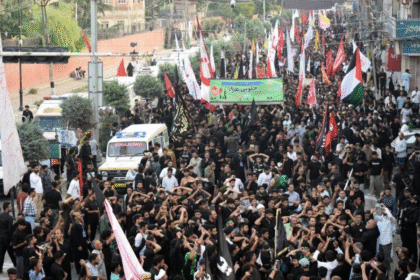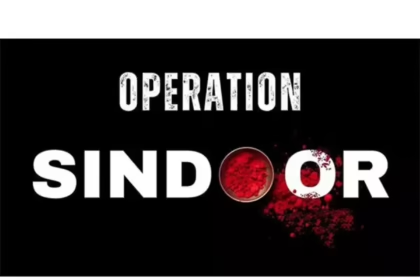Sena MLA Sanjay Gaikwad Faces Legal Action Over Assault Allegations – A Political Firestorm Begins
In a development that has once again brought the conduct of elected representatives into sharp focus, Shiv Sena MLA Sanjay Gaikwad has found himself embroiled in serious legal trouble following allegations of assaulting a canteen staff member in Mumbai. The incident, which reportedly took place inside a government facility, has sparked widespread media attention, public outrage, and formal legal proceedings initiated by the Mumbai Police. While cases involving public figures and law enforcement are not uncommon in India’s volatile political climate, the swiftness with which this particular matter escalated reflects a deeper tension between accountability, power, and institutional discipline.
The confrontation reportedly occurred in the canteen premises of a state-run guesthouse, where Gaikwad, allegedly enraged over service-related grievances, physically assaulted a member of the staff. Eyewitness accounts and preliminary video footage—now circulating widely on news and social media platforms—show a heated exchange that quickly devolved into what appears to be physical aggression. Though the complete details of the incident remain under investigation, the First Information Report (FIR) lodged with Mumbai Police lists charges that include criminal intimidation, voluntarily causing hurt, and abuse of official power.
The Mumbai Police wasted no time initiating action. Officers from the jurisdictional police station conducted preliminary inquiries, collected CCTV footage, and recorded statements from the victim and several witnesses. Sources from the police department confirmed that while Gaikwad has not been arrested, he has been served a notice under Section 41A of the Criminal Procedure Code, requiring his appearance for questioning. Authorities have emphasized that the investigation will proceed in accordance with law and that “no one is above the law,” regardless of political affiliation or influence.
Public reaction has been swift and polarizing. Civil society groups, workers’ unions, and citizens’ rights activists have condemned the incident, calling it a blatant misuse of political power and a violation of workplace dignity. Protests have been staged outside Sena party offices and government guesthouses, demanding Gaikwad’s suspension and the implementation of stricter conduct rules for public officials. Many argue that the case exposes a systemic issue: the normalization of high-handed behavior by those in authority, especially toward lower-rung staff in public institutions.
Meanwhile, the Shiv Sena party leadership has maintained a studied silence, neither condemning nor defending Gaikwad’s actions as of this writing. Some party insiders, speaking on condition of anonymity, say the matter is “under internal review,” while others hint at possible disciplinary action depending on the outcome of the legal proceedings. However, critics argue that such silence amounts to tacit approval, and that political parties must act decisively to demonstrate their commitment to democratic ethics and public service.
On the other hand, opposition leaders have seized the opportunity to question the Sena’s culture of leadership and governance. Prominent figures from the Congress, BJP, and MNS have used the incident to highlight what they describe as an increasing pattern of impunity among Maharashtra’s ruling class. “This is not just about one MLA or one staffer,” said a spokesperson for the opposition in the state legislative assembly. “This is about how those in power treat the people they are supposed to serve.”
As the case unfolds, the legal framework will play a critical role in determining both the individual outcome for Gaikwad and the broader message it sends to the political class. The Indian Penal Code provides a range of legal remedies for victims of physical assault and workplace abuse, but historically, prosecutions against sitting MLAs have been rare and drawn-out. Activists and legal experts alike stress the importance of swift and transparent investigation—not just for justice in this case, but as a precedent for all future misconduct by public officials.
What remains to be seen is whether the case will remain confined to legal channels or spiral into a full-fledged political controversy. Will the Shiv Sena act against its own legislator to preserve its image? Will the police be allowed to complete their investigation without interference? And will the public outcry be sustained long enough to push for real institutional reform?
The legal action against Shiv Sena MLA Sanjay Gaikwad has brought his political persona under renewed scrutiny. While the current case involving the assault of a canteen worker has captured headlines, this incident is not entirely isolated in Gaikwad’s public life. A deeper look into his political career reveals a pattern that highlights broader concerns about political behavior, public accountability, and the tolerance for misconduct among elected officials.
Sanjay Gaikwad represents a legislative assembly constituency in Maharashtra and has been associated with the Shiv Sena for over a decade. Known as a firebrand local leader, Gaikwad built his early political image on strong community outreach and aggressive rhetoric—traits that have both elevated his popularity among party loyalists and drawn criticism from his detractors. His constituency work, especially in areas related to slum rehabilitation, transport, and local civic development, has been relatively active, but not without controversy.
Over the years, Gaikwad has developed a reputation for unfiltered speech and confrontational politics. His comments during legislative debates and public appearances have occasionally drawn censure, both from political opponents and civil society. While these traits have earned him a committed support base in certain grassroots sections, they’ve also painted a picture of a leader more inclined toward muscular politics than nuanced dialogue.
This is not the first time Sanjay Gaikwad’s behavior has made news. In previous years, he has been involved in verbal spats with opposition leaders, accused municipal officials of corruption on camera, and even used coarse language against members of the media. While many of these incidents were dismissed as political theatre or momentary lapses, the physical nature of the current assault allegation marks a troubling escalation.
What stands out is the pattern of impunity. Like many politicians across party lines in India, Gaikwad has rarely faced substantial internal disciplinary action from his party. Public apologies, if any, have been vague, and political consequences have been minimal. This culture of silence and inaction by party leadership enables and even incentivizes aggressive behavior by public officials, especially when such actions are interpreted as signs of strength or loyalty.
Critics argue that this reflects a larger issue in Indian politics—the erosion of democratic decorum and the normalization of intimidation as a political tool. The abuse of power, especially against those in subordinate or vulnerable positions—such as canteen workers, municipal clerks, or junior bureaucrats—reveals a deeply unequal power dynamic. It not only damages the individual dignity of the victim but also chips away at the institutional credibility of governance.
Moreover, Gaikwad’s case must be seen in the context of Maharashtra’s political flux. The Shiv Sena, once a monolithic force in Mumbai’s politics, has undergone serious fragmentation in recent years—first with the Eknath Shinde-led rebellion and then the internal factional splits. In such an environment, local strongmen like Gaikwad often emerge as power brokers, using their influence on the ground to stabilize factional equations or demonstrate electoral relevance. This further complicates party responses to misconduct, as leaders fear internal alienation or loss of vote banks.
Legal experts say that unless strong precedents are set, these patterns will persist. “The problem isn’t just Sanjay Gaikwad—it’s systemic,” says Advocate Priya Nene, a public interest lawyer in Mumbai. “The legal system is slow. Party mechanisms are weak. Media outrage comes and goes. We need structural reforms in political accountability—starting with a code of conduct that is actually enforced.”
Several civil society organizations have now demanded that the Maharashtra Legislative Assembly take cognizance of the incident and refer the matter to the Ethics Committee. Though such bodies exist on paper, they are rarely activated, and even more rarely empowered to issue punitive decisions against sitting MLAs.
As the legal proceedings continue and public pressure builds, the Shiv Sena leadership may find itself at a crossroads. Will it choose institutional integrity over political expedience? Or will it resort to the familiar playbook of deflection, delay, and damage control?
As the Mumbai Police moves forward with legal proceedings against Shiv Sena MLA Sanjay Gaikwad, the case is now navigating a complex legal terrain. In India, where criminal accountability for elected officials is both politically sensitive and procedurally slow, the question is not only whether justice will be served—but how effectively, and how transparently.
The police have registered an FIR (First Information Report) against Gaikwad based on the complaint of the assaulted canteen staffer. The primary charges include sections from the Indian Penal Code (IPC) such as:
- Section 323 – Voluntarily causing hurt
- Section 506 – Criminal intimidation
- Section 504 – Intentional insult with intent to provoke breach of peace
- Section 353 – Assault or criminal force to deter a public servant from discharge of duty (if proven the canteen was a government facility)
These are non-bailable and bailable sections mixed together, which means the police have discretion in how they proceed, but the court may ultimately decide the next steps—especially if a chargesheet is filed.
Despite the clarity of the IPC on such offenses, prosecuting sitting legislators in India is rare and often complicated by political influence. As per a 2023 report by the Association for Democratic Reforms (ADR), over 40% of Indian MLAs and MPs have criminal cases pending against them, and a significant proportion of these involve serious charges, including assault and intimidation. Yet, conviction rates remain low due to procedural delays, withdrawal of cases under political pressure, or witnesses turning hostile.
In Gaikwad’s case, legal experts note that the presence of CCTV footage and multiple eyewitnesses will be critical. If the evidence holds up in court and is not suppressed or compromised, the chances of at least a trial beginning in earnest remain strong. However, for any actual conviction, the process will need sustained institutional integrity—from investigation to prosecution.
The role of the police is crucial here. Mumbai Police, under increasing public scrutiny, has promised “impartial and lawful action.” Still, the reality is that when high-profile politicians are involved, police departments often come under intense political pressure. Past examples from Maharashtra—including the delayed arrests of MLAs in assault or vandalism cases—have shown how investigation timelines can be manipulated.
Moreover, parliamentary privilege and procedural immunity can complicate legal progress. Under Article 194 of the Indian Constitution, state legislators enjoy certain protections when acting in their official capacity. However, these do not cover personal criminal conduct outside legislative functions. Yet, citing public duties or “provocation” is a common defense tactic used by political leaders in such situations.
The court’s role will also be decisive. In recent years, Indian courts—particularly the higher judiciary—have begun taking a more assertive stance on the criminalisation of politics. In a 2020 ruling, the Supreme Court directed political parties to publicly disclose criminal records of candidates and explain why they were selected. This landmark judgment was a bid to make political accountability more transparent.
Still, for action to follow, public and media pressure plays a critical role. “Without sustained visibility, these cases fade into silence,” says Advocate Ramesh Talekar, a senior counsel who has appeared in several public interest cases in Maharashtra. “You need judicial will, yes—but you also need civic engagement. Otherwise, it’s business as usual.”
If the Gaikwad case proceeds as it should, and the court takes cognizance of the matter, it could send a strong message—not only to legislators but to political parties. That message would be simple yet powerful: public service cannot shield you from the law
The alleged assault of a canteen worker by Shiv Sena MLA Sanjay Gaikwad has not only stirred legal and political debate but also exposed a persistent and deeply embedded problem within India’s administrative and political culture—the systematic mistreatment of lower-tier staff within government premises.
Government offices across India, especially those linked to legislative, bureaucratic, or administrative functions, operate with sharp hierarchies of power. Within these structures, clerks, peons, housekeeping staff, and canteen workers occupy the lowest rungs—often invisible in the functioning of state power yet crucial to its day-to-day operations. These individuals, typically employed on contract or through outsourcing, have little job security, limited access to grievance redressal mechanisms, and no real leverage against those who wield authority over them.
In such environments, abuse of power is not just tolerated—it is often normalized. Whether it is verbal abuse from senior officials, pressure to perform menial tasks beyond duty hours, or being made scapegoats when something goes wrong, support staff frequently suffer indignities that rarely make it to news headlines—unless an act of violence forces the issue into public discourse.
The Sanjay Gaikwad case, therefore, is not an anomaly; it is merely one of the few incidents to have been captured, reported, and acted upon.
Interviews with current and former government staff at state guesthouses, secretariats, and local offices in Mumbai reveal a chilling pattern: complaints of threats, shouting, and coercive behavior are widespread but rarely filed. Most staff fear retribution, job loss, or being blacklisted by contractors if they raise concerns about an MLA, minister, or senior bureaucrat.
One housekeeping employee from a suburban government office, speaking under condition of anonymity, recounted, “We are trained not to argue, not to protest. If someone throws a file, insults you in front of others, or makes you wait three hours beyond shift to serve tea—you just do it. Because nobody will listen if you complain.”
The labor model used for these jobs exacerbates the issue. Many such staff are on short-term contracts with private facility management firms. These firms often prioritize placating government clients over protecting their workers. In essence, the employee does not even have a direct employer-employee relationship with the government, creating a dangerous accountability vacuum.
The Gaikwad incident, in which a support worker allegedly suffered physical assault, sits at the extreme end of this spectrum. But it reveals a systemic culture that has been allowed to thrive in silence: where hierarchical privilege shields aggression, and where respect is often reserved only for those with political or administrative clout.
What worsens this environment is the absence of internal complaint systems that are independent and trustworthy. Most government offices in India do not have functioning Internal Complaints Committees (ICCs) or Ombudsman-like structures where junior staff can safely report abuse without fear of retaliation. Even when such systems exist on paper, they are rarely active, and the complainant’s identity is often not protected.
Civil society activists argue that this is not just a labor rights issue—it is a human dignity issue. “When you normalize the idea that a senior official can shout, push, or even slap someone junior, you destroy the idea of public service,” says Deepa Menon, a labor rights advocate in Mumbai. “You’re telling every staff member: your safety is secondary to the ego of power.”
In developed administrative systems around the world, there are clear guidelines for respectful conduct, robust complaint mechanisms, and training for sensitivity and inclusion. India’s political culture, despite numerous modernization initiatives, still lags when it comes to these fundamentals.
In the wake of the Gaikwad case, there is an urgent need to enforce strict codes of conduct for public representatives, backed by enforceable disciplinary rules. Staff unions have also called for CCTV surveillance in all public-facing administrative areas, not as a punitive tool, but as a protective measure for both workers and the public.
As public awareness grows, and media attention forces continued scrutiny, the question is whether institutional change will follow. Or will this case, like so many before it, fade into the archives of outrage without reform?
When allegations surfaced that Shiv Sena MLA Sanjay Gaikwad had physically assaulted a canteen staffer within a government facility, it was not the police, the political class, or institutional watchdogs that first jolted public awareness—it was the media. In a democracy like India, where institutional redress often moves slowly, the media continues to serve as the first responder in matters of public misconduct. However, the quality, depth, and longevity of its coverage are often shaped by editorial priorities, political affiliations, and the fleeting nature of the news cycle.
The initial burst of coverage on the Gaikwad incident was rapid and extensive. National dailies, television channels, and digital platforms ran the story with headlines that emphasized “MLA assaults canteen worker”, often accompanied by grainy CCTV grabs or stills from the FIR. In a city like Mumbai—where media houses sit just kilometers from government guesthouses—the access to first-hand information, police sources, and political insiders makes such stories both competitive and compelling.
This first wave of reporting had three important effects:
- Public awareness of the case rose almost instantly.
- Mumbai Police came under pressure to act swiftly and transparently.
- The Shiv Sena leadership faced a media-fueled moral dilemma about whether to shield or sideline one of their own.
However, as is often the case with media narratives in India, the challenge is not in breaking a story—it is in sustaining it. Within days, other headlines—ranging from international events to celebrity controversies—began replacing Gaikwad’s assault case in the news cycle. The depth of journalistic investigation faded, replaced by sporadic follow-ups. Very few outlets continued to ask the essential questions: Has Gaikwad responded publicly? Has he appeared for police questioning? Has the party taken action? Has the victim received legal or institutional support?
This selective continuity reflects a deeper structural issue within India’s media ecosystem. Newsroom priorities are increasingly driven by speed, clicks, and political alignment. In such a landscape, stories that do not escalate into legal or political showdowns tend to fade from focus. And this is where powerful individuals often find reprieve—not through innocence, but through the erosion of attention.
Moreover, media bias and affiliation can distort how incidents are reported. In states like Maharashtra, where political rivalry runs deep, some channels may amplify an issue based on who is in power, while others downplay it to protect editorial interests tied to political patronage. This leads to fragmented coverage, where one outlet might portray Gaikwad as a rogue MLA tarnishing the image of governance, while another may frame it as a politically motivated exaggeration.
However, despite these flaws, Indian media has also demonstrated moments of incredible resolve. Investigative journalism has, in numerous instances, played a central role in exposing abuse, corruption, and administrative failure. What the Gaikwad case illustrates is the gap between potential and practice—and the urgent need to restore journalism’s commitment to long-form, ethics-driven reporting, especially when it involves public interest and the abuse of power.
Civil society and media-watch organizations have called for greater editorial responsibility in such cases. This includes:
- Periodic follow-ups on legal and political developments.
- Protecting the anonymity and dignity of the victim.
- Ensuring non-partisan framing that holds power accountable, regardless of the party in question.
- Providing platforms for the victim’s voice, beyond the initial report.
One major concern is how easily such stories disappear from public memory if not actively reinforced by consistent coverage. In the absence of visible punishment or closure, the incident risks becoming part of a long, informal archive of political misconduct stories that remain unresolved in the collective consciousness.
On the other hand, social media platforms—especially Twitter (X), YouTube, and Instagram—are now beginning to supplement traditional newsrooms in maintaining pressure. Short clips, opinion threads, and viral reels have kept the Gaikwad case in conversation, especially among younger audiences who may not rely on mainstream media. This shift in public engagement offers hope, but also comes with risks—unverified claims, trial by media, and online harassment are all dangers when social discourse is decentralized.
Ultimately, the media’s role is not simply to report; it is to hold power accountable consistently. The Sanjay Gaikwad case serves as a reminder that the work of journalism doesn’t end at publishing a story—it begins there
Also Read : Bombay HC Dismisses PIL Against Salt Pan Land Transfer for Dharavi Redevelopment; 1,000s to Be Relocated







